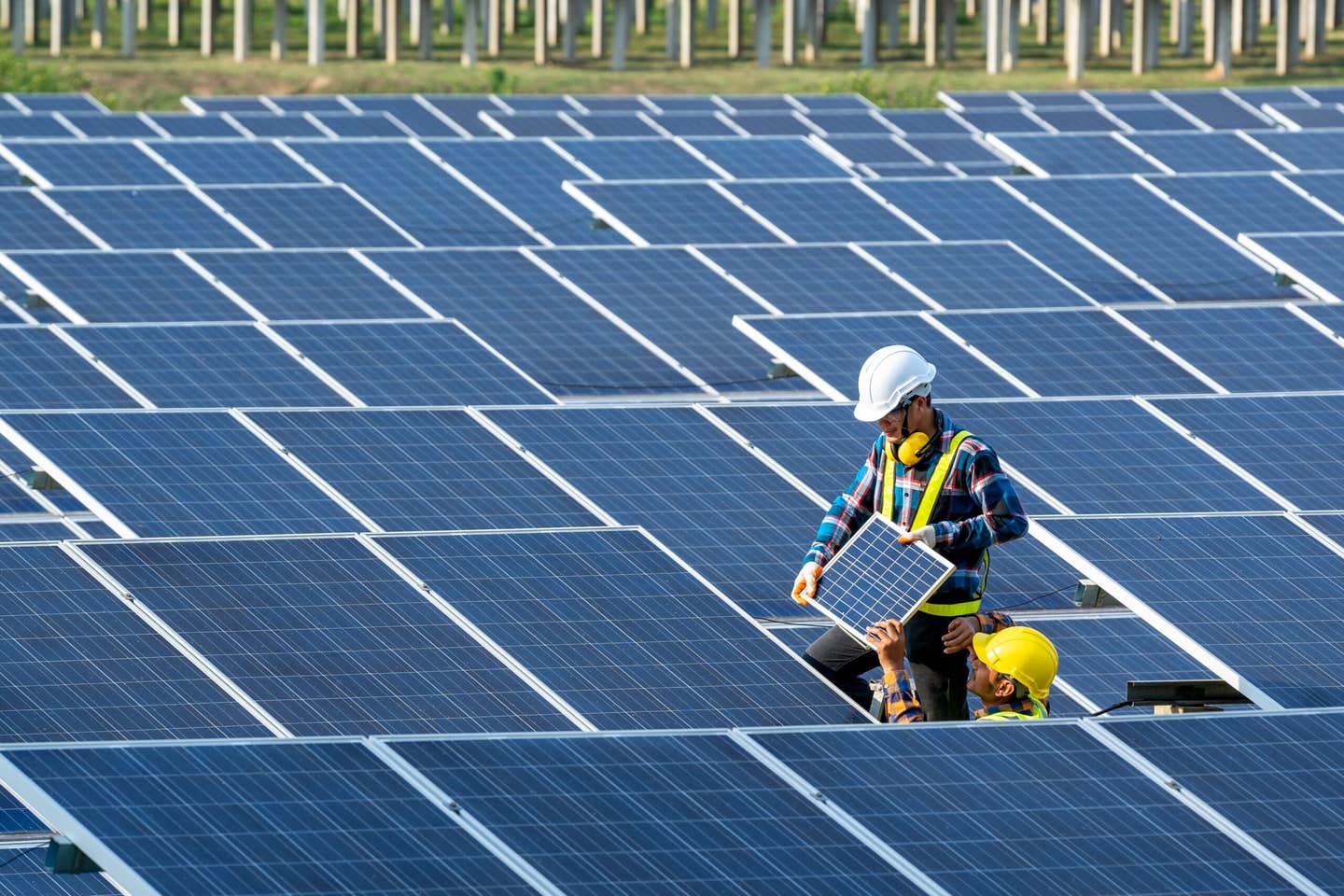Revolutionary solar energy system generates power 24 hours a day
The great inventor Thomas Edison once said, “So long as the sun shines, man will be able to develop power in abundance.”

[Jan. 6, 2022: Laurie Fickman, University of Houston]
Researchers developed a new type of solar energy harvesting system that breaks the efficiency record of all existing technologies. (CREDIT: Creative Commons)
The great inventor Thomas Edison once said, “So long as the sun shines, man will be able to develop power in abundance.” His wasn’t the first great mind to marvel at the notion of harnessing the power of the sun; for centuries inventors have been pondering and perfecting the way to harvest solar energy.
They’ve done an amazing job with photovoltaic cells which convert sunlight directly into energy. And still, with all the research, history and science behind it, there are limits to how much solar power can be harvested and used – as its generation is restricted only to the daytime.
A University of Houston professor is continuing the historic quest, reporting on a new type of solar energy harvesting system that breaks the efficiency record of all existing technologies. And no less important, it clears the way to use solar power 24/7.
"With our architecture, the solar energy harvesting efficiency can be improved to the thermodynamic limit,” reports Bo Zhao, Kalsi Assistant Professor of mechanical engineering and his doctoral student Sina Jafari Ghalekohneh in the journal Physical Review Applied. The thermodynamic limit is the absolute maximum theoretically possible conversion efficiency of sunlight into electricity.
Related Stories
Finding more efficient ways to harness solar energy is critical to transitioning to a carbon-free electric grid. According to a recent study by the U.S. Department of Energy Solar Energy Technologies Office and the National Renewable Energy Laboratory, solar could account for as much as 40% of the nation’s electricity supply by 2035 and 45% by 2050, pending aggressive cost reductions, supportive policies and large-scale electrification.
How Does it Work?
Traditional solar thermophotovoltaics (STPV) rely on an intermediate layer to tailor sunlight for better efficiency. The front side of the intermediate layer (the side facing the sun) is designed to absorb all photons coming from the sun. In this way, solar energy is converted to thermal energy of the intermediate layer and elevates the temperature of the intermediate layer.
But the thermodynamic efficiency limit of STPVs, which has long been understood to be the blackbody limit (85.4%), is still far lower than the Landsberg limit (93.3%), the ultimate efficiency limit for solar energy harvesting.
(a) Illustration of traditional STPV and (b) nonreciprocal STPV. The absorber of traditional STPV has back radiation towards the sun. In nonreciprocal STPV, the back emission from the intermediate layer is suppressed, and more incoming energy is directed towards the cell. The nonreciprocal behavior of the intermediate layer can be made wavelength selective. (CREDIT: University of Houston)
“In this work, we show that the efficiency deficit is caused by the inevitable back emission of the intermediate layer towards the sun resulting from the reciprocity of the system. We propose nonreciprocal STPV systems that utilize an intermediate layer with nonreciprocal radiative properties,” said Zhao. “Such a nonreciprocal intermediate layer can substantially suppress its back emission to the sun and funnel more photon flux towards the cell."
We show that, with such improvement, the nonreciprocal STPV system can reach the Landsberg limit, and practical STPV systems with single-junction photovoltaic cells can also experience a significant efficiency boost.”
Bo Zhao, Kalsi Assistant Professor of mechanical engineering, and his doctoral student, Sina Jafari Ghalekohneh, have created new architecture that improves the efficiency of solar energy harvesting to the thermodynamic limit. (CREDIT: University of Houston)
Besides improved efficiency, STPVs promise compactness and dispatchability (electricity that can be programmed on demand based on market needs).
In one important application scenario, STPVs can be coupled with an economical thermal energy storage unit to generate electricity 24/7.
Efficiency of nonreciprocal and reciprocal STPV with a single-junction cell for different area ratios β. Blue and orange curves show the efficiencies of NSTPVs and reciprocal STPVs, respectively. The Shockley-Queisser limit and the blackbody limit are independent of β. They are marked as horizontal dashed lines in the figure. (CREDIT: Physical Review Applied)
Researchers showed that the NSTPV system they developed can reach the Landsberg limit, and practical NSTPV systems with single-junction photovoltaic cells can also experience a significant efficiency boost.
“Our work highlights the great potential of nonreciprocal thermal photonic components in energy applications. The proposed system offers a new pathway to improve the performance of STPV systems significantly. It may pave the way for nonreciprocal systems to be implemented in practical STPV systems currently used in power plants,” said Zhao.
For more green news stories check out our Green Impact section at The Brighter Side of News.
Note: Materials provided above by University of Houston. Content may be edited for style and length.
Like these kind of feel good stories? Get the Brighter Side of News' newsletter.
Joseph Shavit
Head Science News Writer | Communicating Innovation & Discovery
Based in Los Angeles, Joseph Shavit is an accomplished science journalist, head science news writer and co-founder at The Brighter Side of News, where he translates cutting-edge discoveries into compelling stories for a broad audience. With a strong background spanning science, business, product management, media leadership, and entrepreneurship, Joseph brings a unique perspective to science communication. His expertise allows him to uncover the intersection of technological advancements and market potential, shedding light on how groundbreaking research evolves into transformative products and industries.



